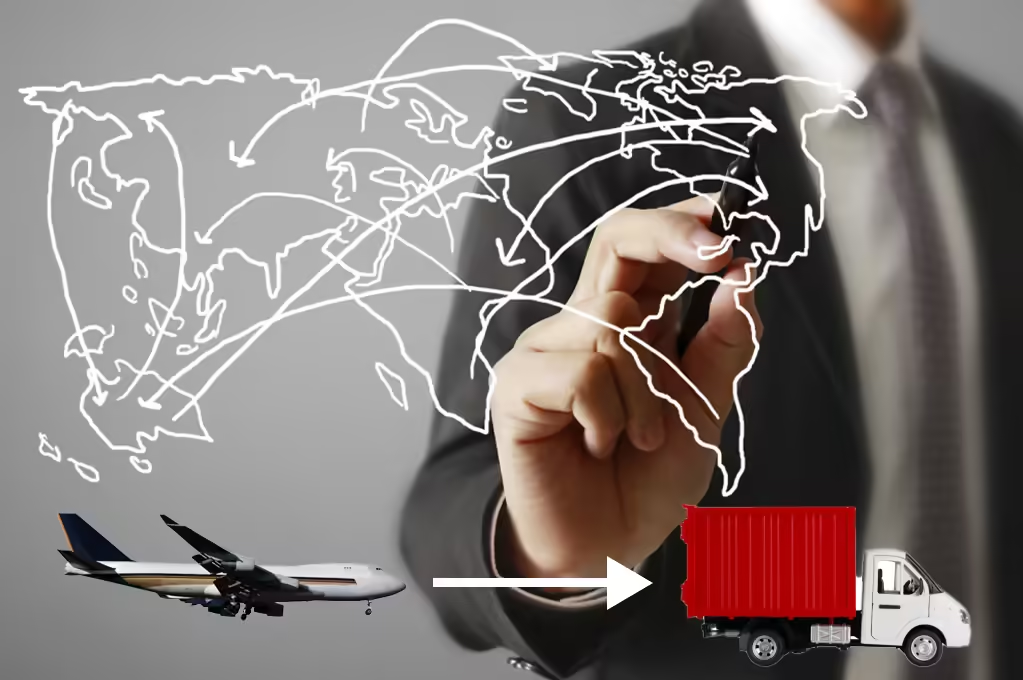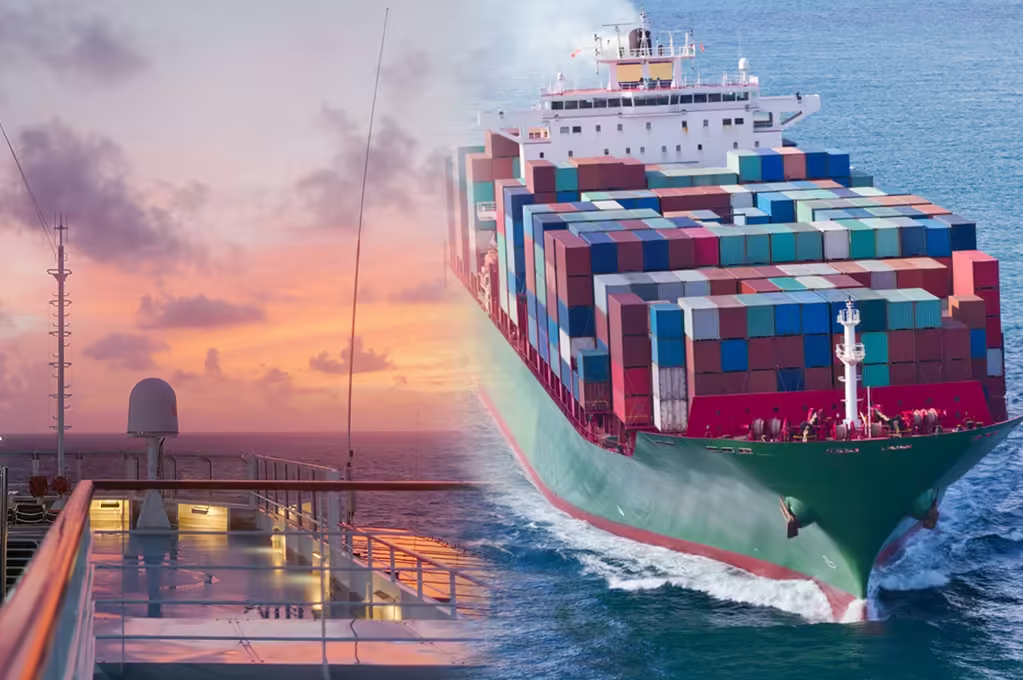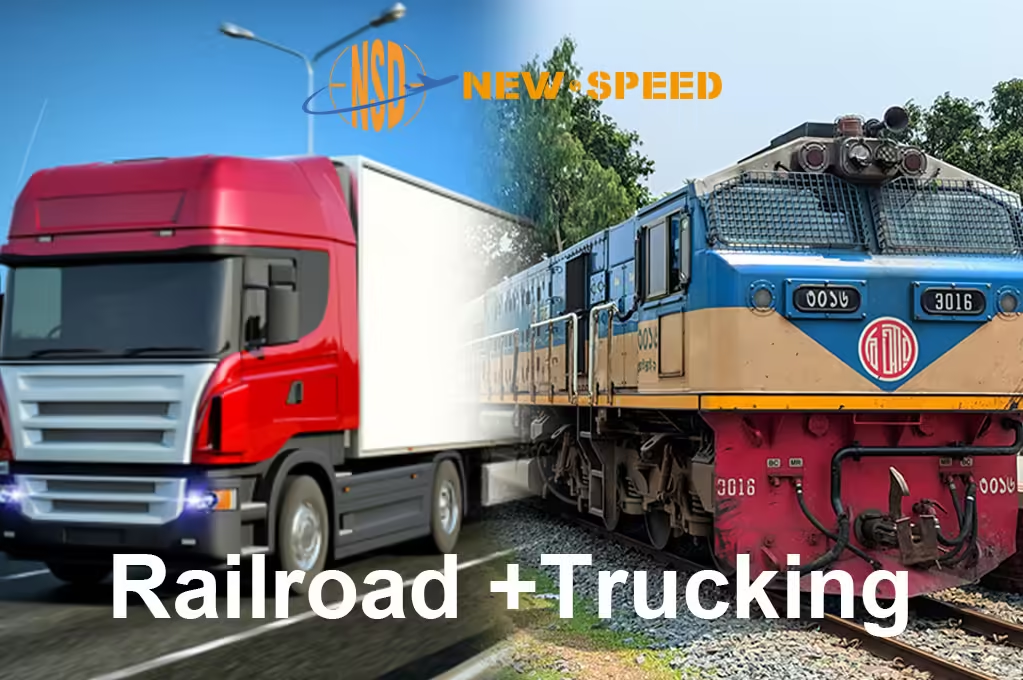Multimodal transportation of goods is a logistics strategy that combines two or more modes of transport to move goods efficiently. This article explores some common combinations used in multimodal transportation, including air + express, air + trucking, international trucking + express, international trucking + trucking, LCL (Less than Container Load) + express, LCL + trucking, railroad + express, and railroad + trucking.
Multimodal Transportation of Goods:Air +Express

Overview
Air Freight typically refers to a transportation method where air freight is used as the primary means to swiftly move goods from the origin to the destination, followed by ground transportation to complete the final delivery.
How to work
The goods are first transported via air cargo from the origin to the destination airport.while the goods arrive at the destination airport, they are handed over to an express courier service, such as DHL, FedEx, UPS, or similar.
Multimodal Transportation of Goods:Air + Trucking
Overview
“Air + Trucking” refers to a specific type of multimodal transport where air freight is combined with road transportation to deliver goods. This method is often used when there is a need for expedited delivery or when the destination is not directly accessible by air or requires last-mile delivery.
How to work
Goods are first flown from the origin airport to the destination airport using commercial or cargo aircraft. When upon arrival at the destination airport, the goods are then loaded onto trucks for further transportation.Trucking provides the flexibility to reach locations that are not served by airports and facilitates the last-mile delivery.

Multimodal Transportation of Goods:International Trucking +Express
Overview
“International Trucking + Express” refers to a specific type of multimodal transportation strategy where goods are moved across international borders primarily using truck transportation, and then the final delivery is facilitated through an express courier service.
How to work
When goods loaded onto trucks and transported across international borders must go through customs clearance. Once cleared, the goods continue on the same or a different truck for domestic distribution to a central hub or distribution center near the final destination. For the last leg, an express courier service, such as DHL, FedEx, UPS, or local equivalents, handles the last-mile delivery to the specified address.
Multimodal Transportation of Goods:International Trucking + Trucking
Overview
International Trucking + Trucking” refers to a transportation strategy where goods are moved across international borders primarily using trucks for both the long-haul transport between countries and the final mile delivery within the destination country.
How to work
Goods are loaded onto trucks at the origin and driven across international borders, clearing customs at each point. Once cleared in the destination country, the goods are picked up by another truck for domestic distribution. This may be the same or a different truck, depending on logistics and delivery requirements. The final step involves delivering the goods to the end customer or designated location using a truck appropriate for the final destination.
Multimodal Transportation of Goods:LCL + Express
Overview
“LCL + Express” refers to a transportation strategy that combines Less-Than-Container Load (LCL) shipping with express courier services for the final delivery. This approach is particularly useful for shippers who have smaller cargo volumes that do not fill a standard shipping container but still require fast and reliable delivery.

How to work
When a shipper does not have enough cargo to fill a whole container, their cargo is consolidated with others into a single container by a freight consolidator or a carrier specializing in LCL (Less than Container Load) services. The container is shipped via sea, rail, or road to the destination port or terminal. Upon arrival, the container is opened, and the individual shipments are sorted out and prepared for the next stage of the journey. The sorted shipments are then handed over to an express courier service, such as DHL, FedEx, UPS, or local equivalents, for the final delivery to the consignee. The express courier picks up the cargo from the consolidation point and delivers it directly to the recipient’s address, ensuring timely delivery and often providing additional services like signature upon delivery and proof of delivery.
Multimodal Transportation of Goods:LCL + Trucking
Overview
“LCL + Trucking” refers to a transportation strategy that combines Less-Than-Container Load (LCL) shipping with trucking services to facilitate the final delivery to the customer. This method is particularly advantageous for shippers who have cargo volumes too small to fill an entire container but need efficient and cost-effective transport to inland destinations.
How to Work
Shippers with insufficient cargo to fill a full container (FCL) can consolidate their goods with others into a shared container. A freight forwarder or consolidator manages the shipment via sea freight to the destination port. Upon arrival, the container is unloaded, and the individual consignments are separated. After customs clearance and any necessary inspections, the goods are loaded onto trucks for delivery to their final destination, such as a distribution center, warehouse, or retail outlet. Trucking provides the flexibility for last-mile delivery to multiple addresses.
Multimodal Transportation of Goods:Railroad + Trucking
Overview
“Railroad + Trucking,” often referred to as intermodal transportation, is a method that combines the use of rail transport for long-distance haulage with trucking for pickup and delivery to origins and destinations not directly served by rail lines. This combination leverages the strengths of both modes of transport to create an efficient and cost-effective supply chain solution.

How to work
Initially, goods are picked up by a truck from the sender’s facility and taken to a rail terminal. There, the goods are loaded onto rail cars and transported to the destination rail terminal. Upon arrival, the goods are unloaded and reloaded onto trucks for the final delivery to the consignee’s location, completing the last mile of the journey.
Multimodal transportation offers a flexible and efficient way to move goods across different regions and countries. By understanding the strengths and limitations of each combination, businesses can tailor their logistics strategies to meet specific needs and optimize their supply chains for cost, speed, and reliability. As technology advances and new logistics solutions emerge, the possibilities for multimodal transportation continue to expand, offering even greater opportunities for businesses worldwide.

